
10 Surprising Foods Your Dog Can Safely Enjoy
June 20, 2024
A Guide to Vaccinating Your New Puppy in Australia
August 22, 2024How to Remove a Tick from Your Dog
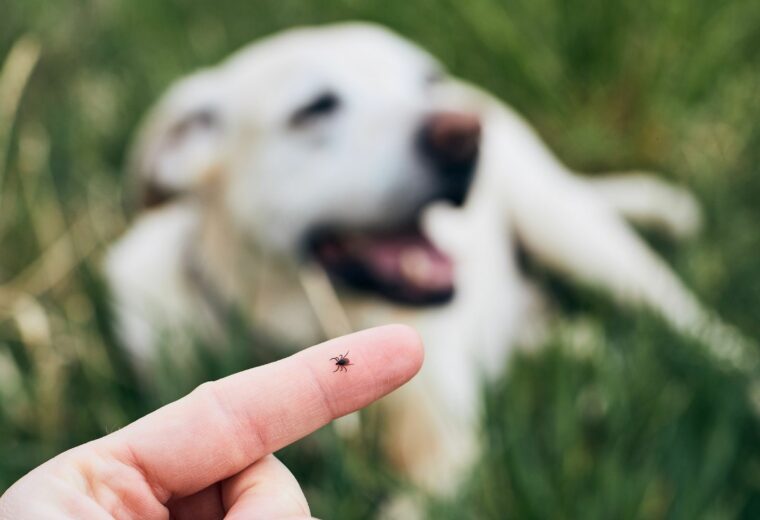
Australia is home to over 70 tick species, making tick bites a common concern for dog owners. Larger than fleas and with more legs and mouthparts, ticks are highly dangerous parasites that feed on the blood of animals and humans. Due to their limited mobility, ticks rely on passing animals to transport them to alternative locations and food sources.
There are three main types of ticks here in Australia: paralysis ticks, brown dog ticks and bush ticks. All are dangerous, but paralysis ticks are of particular concern and are most commonly found along the East Coast.
Tick poisoning is particularly prevalent in Sydney during spring and summer due to the parasites’ preference for hot and humid conditions. Symptoms of tick paralysis include vomiting, changes in breathing, wobbly back legs, and voice changes. Even without immediate symptoms, ticks inject toxins that can cause irritation and health issues.
If you do notice a tick bite on your pet, it must be removed safely and promptly to prevent further harm to your furry friend.
At Rossmore Vet, the health of your pets is our top priority. If you don’t feel comfortable doing it at home, come into our clinic, and we’ll be happy to help you remove ticks. Here’s our guide for identifying and removing ticks safely.
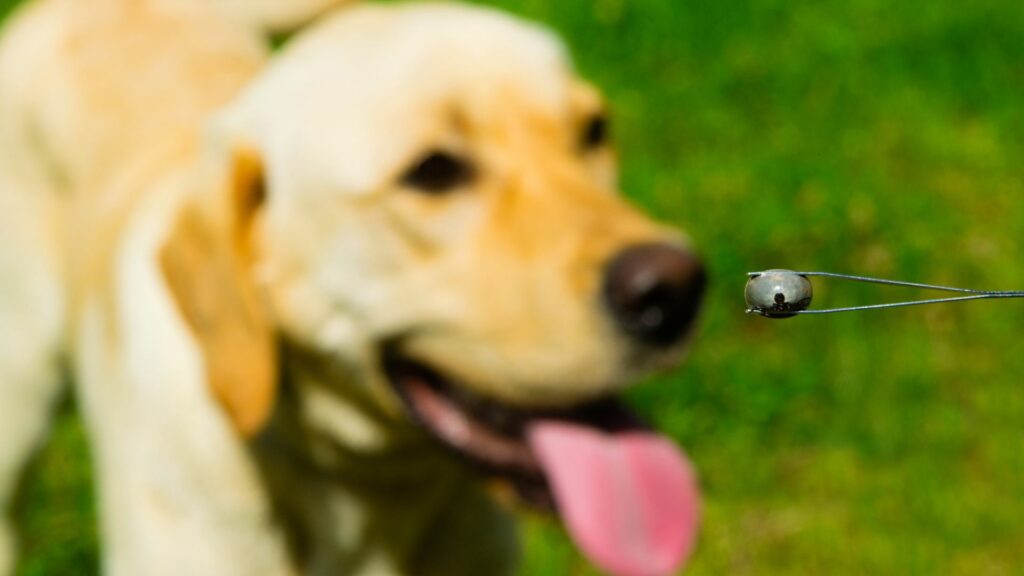
Preparing to Remove a Tick
Before beginning the removal process, ensure you have all the necessary equipment within reach. It’s best to perform the procedure quickly, especially if your dog becomes unsettled.
You will need:
- Fine-point tweezers
- Rubbing alcohol
- Gloves
- Antiseptic wipes or ointment
- A jar or other sealed container
Step-by-Step Tick Removal
Step 1: Protect yourself
Unusual poking and prodding may agitate your dog so staying calm yourself will help. Take a deep breath, and do not start the removal process until your pet is relaxed. Consider enlisting the help of someone else to keep your dog relaxed by gently holding it.
Put on the gloves and pour rubbing alcohol into a jar or container. After removal, the tick will be stored in this container.
Step 2: Grasp the tick
Spread your animal’s fur and grasp the tick as close to the skin as possible without pinching your dog. Fine-point tweezers are ideal for this, as they are precision tools. Avoid squeezing the tick’s body, as potential tears may spread additional infections into and around the bite area.
Step 3: Pull the tick out
Remove the tick by pulling straight upward, gently, slowly and steadily. Avoid twisting, as this may result in the tick’s mouth parts, which are inserted in your dog’s skin, remaining embedded inside its body.
Be prepared to apply a surprising amount of force as ticks can be stubborn.
Once the tick is detached from the pet’s skin, inspect the bite area to check if the mouthparts have been properly removed. If not, take your dog to the vet to remove the remaining tick parts. Never dig around the skin to attempt to remove it yourself.
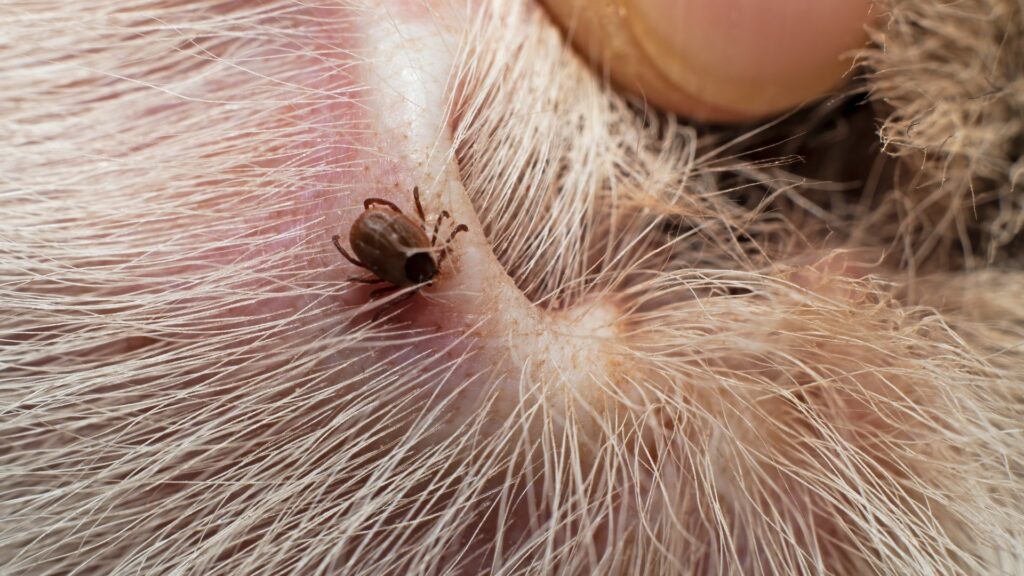
Step 4: Kill the tick
Place the tick into the disinfected container and close the lid. You’ll want to keep the parasite for identification in case your dog starts showing further symptoms or signs of disease.
Step 5: Disinfect the bite area
Clean the bite area with antiseptic wipes or ointment and continue monitoring the area for reddening or inflammation.
Thoroughly wash your hands and disinfect the tweezers.
Step 6: Reward your dog
Give your furry friend a treat for being so brave.
In the days after the removal, visit a vet immediately if your dog displays any of the following symptoms:
- Fatigue and weakness moving around
- Heavy breathing, panting and grunting
- Wobbly legs
- Paralysis throughout the trunk, upper extremities and head
- Loss of appetite
- Coughing
- Vomiting
- Heavy salivation
- Collapsing
This guide also works for cats. However, we suggest wrapping your cat in a towel to keep it calm and stable, as it is more likely to become agitated throughout the removal process and claw you.
For tricky ticks, an alternative removal method that your veterinarian may use is a tick removal cryopen. This device uses nitrous oxide to freeze the tick and its cells, allowing for removal without surgery.
Tick Identification Guide
Identifying ticks is necessary if your pet experiences long-term side effects. The type of tick-borne illness depends on the variety of tick bite, so this information will aid the vet during treatment.
It’s important to note that most ticks feed (and therefore stay attached) for several days. Initially, quite small, and flat — resembling spiders — once ticks start feeding, their bodies grow noticeably large and paler.
Paralysis tick
Found from Cape York in North Queensland to Lake Entrance in Victoria, the paralysis tick is one of the most harmful parasites for pets. As the name suggests, these ticks can cause paralysis in cats and dogs. The paralysis tick’s main identifier is its dark brown front and back legs and light middle legs.
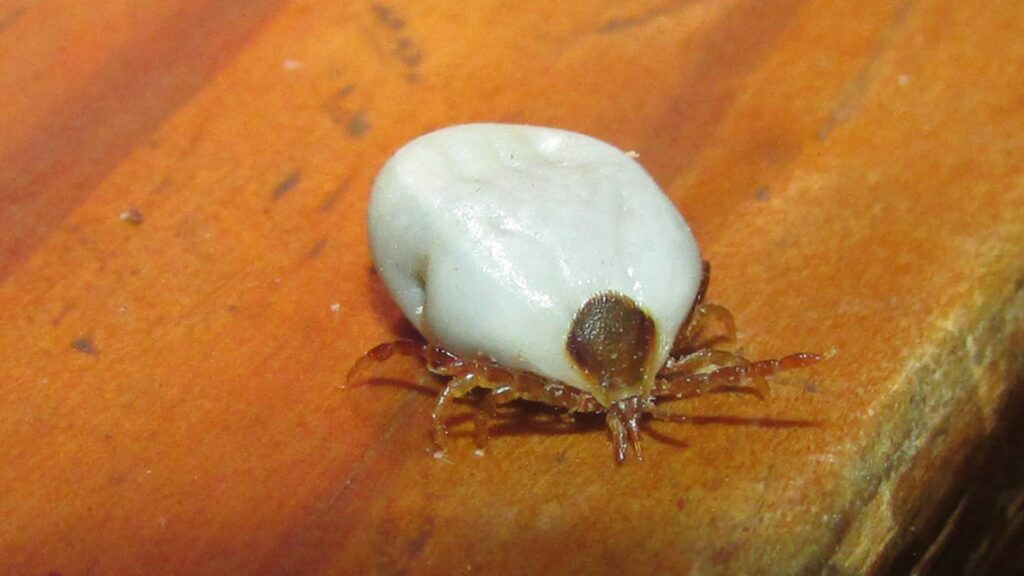
Bush tick
Also known as cattle ticks, bush ticks can pass on a parasitic red blood cell infection that causes anaemia — a lack of oxygen in the blood. Aptly named, bush ticks are often found in scrub on Australia’s east and west coasts. Their legs are reddish-brown, and the front pair is close to their mouths.
Brown dog tick
With brown, evenly spread legs, the brown dog tick is a less severe version of the bush tick, also found in the bush all over the country.
Tick-Bite Prevention Tips
Tick treatment is an ongoing process involving three main steps.
- Check your dog regularly for ticks, especially after outdoor activities such as long walks. Ticks are most commonly found around ears, gums, and other crevices, such as around the toes and neck. Always check your dog’s collar.
- Use tick-prevention products recommended by your vet to keep your pet’s environment clean and tick-free. If you live in an area with a large tick habitat, it may be worth investing in a tick remover, a handy tool to replace tweezers.
- Have tick removal items on hand and replenish them as precautions in case of an emergency.
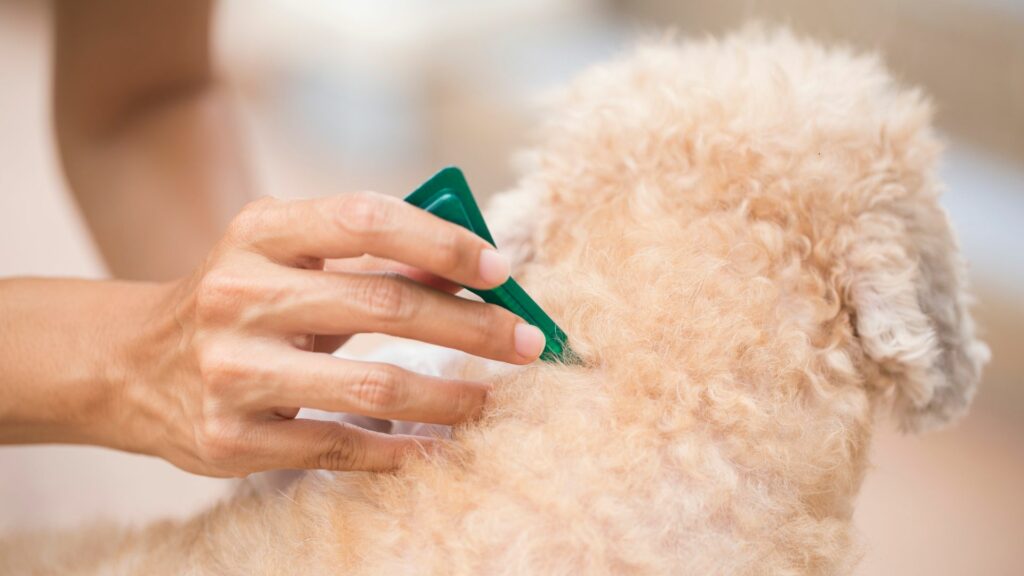
For More Tick Bite Help, Contact Rossmore Vet Hospital
Proper tick removal is an important process for your pet’s health coverage and is best done promptly. If you have any concerns or need further advice on tick prevention and treatment, don’t hesitate to contact our friendly team of experienced veterinarians at Rossmore Vet Hospital.
Our services cover a wide range of animal healthcare, from vaccinations and tick removal to surgery, micro-chipping, and nutritional and behavioural advice; we are here to help.
Call us with your queries at (02) 9606 6984 or visit our clinic on Bringelly Road, and rest assured that your pet will receive thorough care for all of its health needs.



